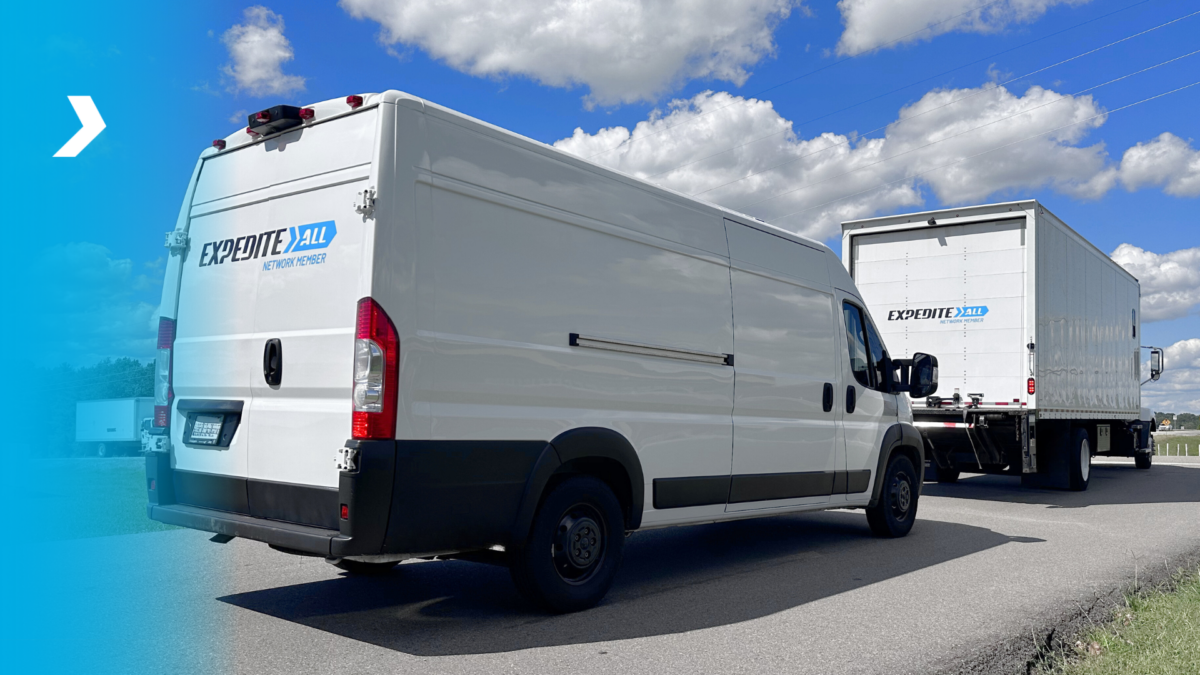How to Reduce Shipping Costs Without Compromising Speed: A Comprehensive Guide

Delicate balancing between cost and speed of delivery when shipping 3-5 pallets of cargo is one of the biggest challenges in today's logistics. Traditionally, two primary methods have dominated the shipping industry: Less Than Truckload (LTL) and Full Truckload (FTL). However, while both of them have served their purposes well, they come with several limitations and drawbacks, the main of which are the high cost of FTL and the low speed of LTL. Fortunately, there is a better solution - Small Truck Load (STL), a revolutionary shipping method that provides a game-changing advantage, combining the fast speed of FTL with the lower shipping cost of LTL.
Understanding Small Truck Load (STL) Shipping
Small Truck Load (STL) shipping is a logistics method that strikes a perfect balance between LTL and FTL shipping when it comes to delivering the amount of cargo that falls in the gap between the traditional options. Its numerous benefits can revolutionize how your company manages its freight transportation. Here are to name a few of them:
Exclusive Use and Cargo Safety
In an STL shipment, your cargo is assigned exclusive use of a smaller commercial vehicle, ensuring faster delivery and enhanced cargo safety. This exclusive use means no additional stops during transit, which minimizes cargo handling and the associated risk of damage.
Cost-Effectiveness
In contrast to FTL, where you might end up paying for unused truck space, sending it half-empty, STL shipping allows you to pay only for the space you actually need, resulting in substantial cost savings for your business. These cost savings can be reinvested into other areas of your operations or passed on to your customers, giving you a competitive edge in the market.
Unmatched Flexibility
Smaller commercial vehicles like sprinters and box trucks, typically used in STL shipping, offer greater flexibility for scheduling and routing. These vehicles are well-suited for navigating tight urban environments, making them an ideal choice for deliveries to urban centers and areas with limited access for larger trucks. This adaptability ensures that your shipping strategy can be tailored to meet your specific needs, regardless of your cargo's destination or the complexity of your supply chain.
Implementing STL Shipping in Your Business
Navigating the shift to STL shipping may seem challenging, especially if it's uncharted territory for you. Nevertheless, armed with the comprehensive step-by-step guide that follows, you'll effortlessly master the process and smoothly transition your business to this exceptionally efficient shipping approach:
- Assessing Your Shipping Needs
Evaluating your organization's unique shipping requirements is the first step toward implementing a reliable STL shipping strategy. Determine if STL shipping aligns with your cargo size and delivery demands.
- Finding Reliable STL Shipping Providers
A reliable STL shipping provider is half the battle when it comes to building an effective supply chain. Conduct thorough research to identify reputable STL shipping providers in your geographic area or region. Look for companies with a proven track record of delivering shipments safely and on time.
- Negotiating Rates and Terms
Reach out to potential STL shipping providers and engage in negotiations regarding rates and contractual terms. Ensure that the agreement aligns with your budgetary constraints and shipment requirements. Study the offerings to find out which one best suits your needs and budget.
- Training Your Team
It's crucial to ensure that your logistics team is well-versed in the processes and requirements associated with STL shipping. Comprehensive training will facilitate a smooth transition and effective management of your shipments.
- Monitoring and Evaluating Impact
After implementing STL shipping, continuously monitor its impact on your shipping costs and delivery speed. Be prepared to make adjustments on the fly as necessary to maximize the efficiency of your supply chains.

While transitioning to STL shipping offers numerous advantages, it's essential to acknowledge the potential challenges that may arise during this shift. Adapting to the new logistics processes associated with STL shipping can be demanding, requiring your team to undergo specific training and adapt to a different workflow. Another pitfall is building effective communication within your organization and with external carriers to ensure everyone is aligned with the new shipping strategy.
To make this transition smoother, consider utilizing platforms like Expedite All, which not only connect you with a network of reputable STL carriers but also provide tools to streamline shipment management and optimization, ultimately enhancing your overall shipping experience.
Comparing STL Shipping to Traditional Methods
Let's conduct a comprehensive comparative analysis of STL shipping in relation to traditional shipping methods, such as LTL and FTL. We'll assess these methods in terms of cost, speed, flexibility, and their environmental impact.
Cost
STL shipping is often more cost-effective compared to traditional methods. With STL, you only pay for the room you need, eliminating the inefficiencies associated with half-empty trucks in FTL or shared space in LTL.
Speed
STL shipping offers a distinct advantage in terms of speed, especially compared to LTL. The exclusive use of a vehicle ensures quicker delivery times, while LTL may involve multiple stops or longer transit times.
Flexibility
Smaller commercial vehicles used in STL shipping are more adaptable in terms of scheduling and routing. In contrast, FTL and LTL often involve rigid schedules due to road infrastructure limits and restrictions.
Environmental Impact
Optimized routes and reduced wasteful space associated with STL can contribute to reduced emissions and a more sustainable approach to shipping. From an environmental standpoint, STL shipping has an unbeatable advantage.
To better underscore the benefits of STL shipping, let's take a closer look at insights directly shared by US carriers and truck owners. Thus, one of the recent surveys found that 96% of LTL shippers experienced shipping delays from 1 to 4 days, whereas approximately 50% of FTL shippers frequently operated half-empty.
Summary
When looking for the perfect equilibrium between shipping costs and delivery speed, Small Truck Load (STL) shipping emerges as a game-changing solution that enables businesses to significantly reduce their shipping costs without compromising the speed and efficiency of their deliveries. By incorporating STL shipping practices into your organizational framework, you can meticulously refine and enhance your existing logistics procedures, thereby attaining significant financial advantages in terms of cost reduction while achieving a notable boost in customer satisfaction.
Redefine your shipping strategy with Expedite All - your partner in efficient and speedy STL shipping. Contact us today to get started.


